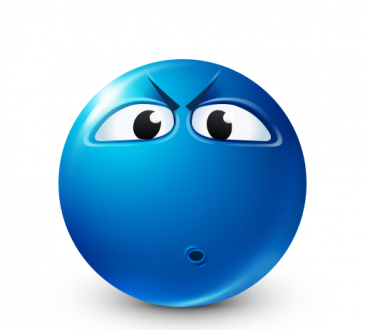
BLUE EMOJIS The proliferation of smartphones and other mobile devices has led to a surge in the use of emojis. From messaging to social media, emoji usage is on the rise. But what are they, exactly? And why are they so popular? In this blog post, we’ll be interviewing BLUE EMOJI Expert, Joshua Schachter, to learn more about these quirky symbols and their popularity.
What led you to pursue a career in BLUE EMOJIS design?
I was always drawn to the creative side of things and I think it’s something that I truly enjoy. After completing my undergraduate degree, I started working in a graphic design agency as a junior designer. There, I learned a lot about project management, marketing, and user experience/customer service. It was during this time that I discovered emoji design and fell in love with it.
There are so many potential uses for BLUE EMOJIS that it really caught my attention. From digital signage to social media posts, there’s just so much potential for them to be used in a variety of different ways. Plus, they’re just so darn cute!
After learning more about BLUE EMOJIS and thinking about what kind of career path I could follow in this field, I decided that it would be best to study emoji design formally. So, I enrolled in the Certificate in Emoji Design program at The School of Visual Arts in New York City. It’s been an amazing experience so far and I can’t wait to continue learning and growing as an emoji designer.
What are the most important skills for designing BLUE EMOJIS?
Designing BLUE EMOJIS is a complex and time-consuming process that requires experts to understand the Unicode standard and know how to create the perfect icon. Here are the most important skills for designing emoji:
1. Familiarity with Unicode Standard – The Unicode Standard is the set of rules governing how emoji characters are designed and coded. To design an emoji that meets the standards, designers must be familiar with the character sets and code points.
2. Knowledge of Symbols – Emoji icons must be carefully crafted to represent specific emotions, objects, or words. To create a successful emoji, designers must have knowledge of common symbols and their meanings.
3. creativity – Despite being based on standardized designs, each emoji has a unique personality that needs to be captured in order for it to be successful. Emoji icons must be visually appealing and engaging for users, which often requires creative thinking. BLUE EMOJIS
4. BLUE EMOJIS, Detail Oriented – While simplicity is key when creating an overall design concept for an emoji, certain details (such as hair styles) need to be accounted for in order to accurately represent specific characters or concepts. Careful attention to detail is essential for creating high-quality emojis
How do you approach creating new emoji designs?
BLUE EMOJIS, There are a few steps that you need to go through in order to create a new emoji design: first, you need to decide on the type of emoji that you want to create. There are six different types of emoji, which are Symbol, Face with Expression, Telephone, Message, Camera and Food.
Once you have decided on the type of emoji that you want to create, you then need to think about what the design should represent. Some things to consider when creating an emoji design are its meaning and how it will be used. After thinking about the meaning and usage of the emoji, you can start designing it. The most important part of designing an emoji is making sure that it is user-friendly and visually appealing.
What are some of the challenges you face when designing emoji?
When it comes to designing BLUE EMOJIS, there are a few challenges designers face. One of the biggest is figuring out what users want and need. There’s no one right answer when it comes to emoji, as the designs must be able to work in both traditional and digital platforms. Additionally, emoji have to be visually appealing while still being legible on all devices. When it comes to designing new emojis, there’s always room for improvement. Some of the challenges designers face include:
-Figuring out what users want and need
-Designing for both digital and traditional platforms
-Creating visually appealing emojis that are still legible on all devices
What advice would you give to someone who is considering a career in emoji design?
If you’re considering a career in emoji design, here are some tips from the expert:
1. Be passionate about it. Emoji design is all about creating unique and expressive designs that can be used on digital platforms like phones and social media. If you love making things look pretty and want to create something that people will use all the time, this is the career for you.
2. Know your emojis. A strong understanding of emoji usage is essential if you want to succeed in this career field. Familiarize yourself with the different types of emoji available (e.g., smiley faces, food items, body parts) and know how to use them effectively in your designs.
3. Have an eye for detail. It’s important not only to be able to create visually appealing emoji designs, but also to pay attention to small details that can make a big difference. For example, making sure all Uber icons are looking different in every city? Making sure that all Amazon products have their own unique icon? Taking care of these little details can really set your designs apart from the rest and make them more user-friendly overall.
4. Be creative! While it’s important to have a firm understanding of emoji usage and design principles, don’t be afraid to experiment – there’s no wrong way to approach this field! Explore different techniques and approaches, try out new ideas, and let your creativity run wild – who knows where it will take you
Conclusion
The BLUE EMOJIS Expert Interview is a series of interviews with people who know a thing or two about emojis. In this episode, we talk to Melissa Henson, an emoji and typography consultant and author of The Unicode Emoji Guide.
We discuss the history of emoji, how they’re used in digital communication, and some of the challenges that designers face when creating emoji versions of popular characters like Hulk Hogan and Spider-Man. If you’re interested in learning more about the behind-the-scenes work that goes into creating emojis, be sure to check out this episode!



